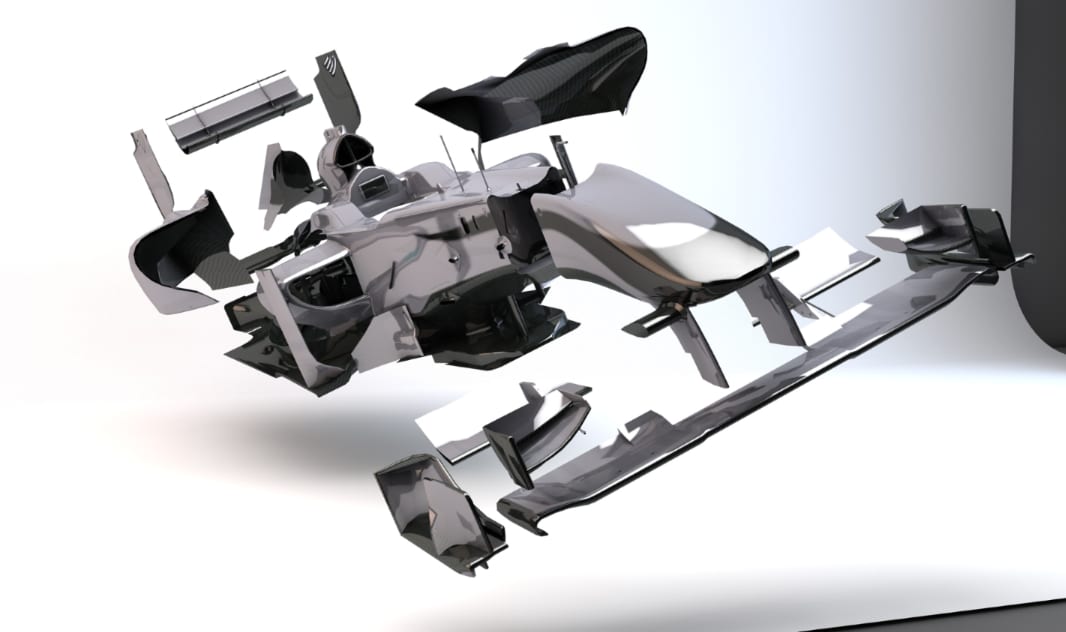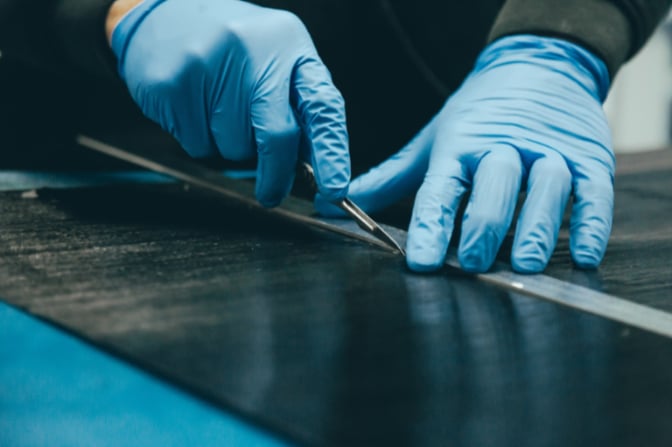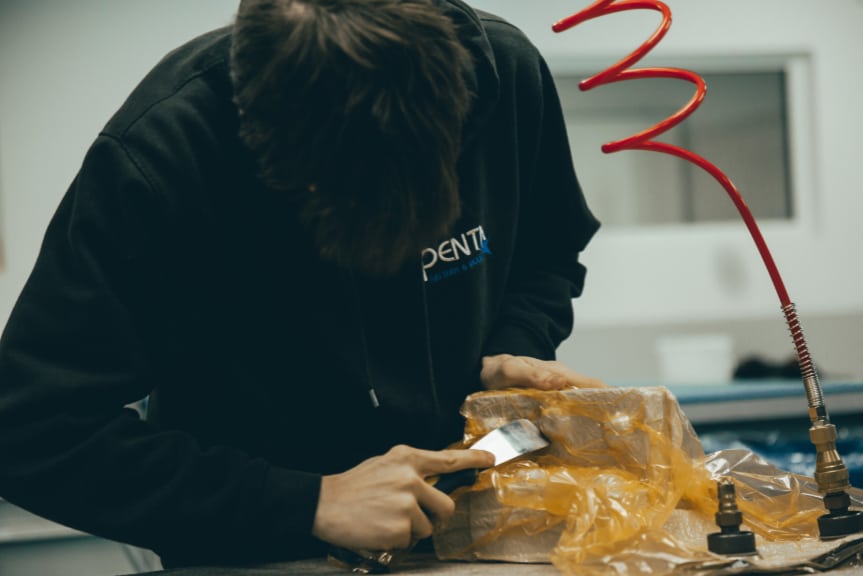What is Carbon Fibre Used For?
Carbon fibre is widely regarded for its aesthetic appearance, stiffness and tensile strength, light weight, temperature tolerance and resistance to some chemicals. For this reason, carbon fibre parts are present in all types of industries, including:
- Aircraft – carbon fibre is an increasingly popular choice of material for the construction of aircraft bodies including planes and helicopters.
- Formula 1 – used throughout Formula 1 vehicles, including in the monocoque, the nose and the front wing.
- Construction – for the creation of lightweight framing structures, such as trusses and structural beams.
- Industrial automation – machine parts and casings can be made from carbon fibre for automation machinery.
- Sporting equipment – The use of carbon fibre in sporting equipment has drastically changed the game and continues to push the limits of what is possible. Carbon fibre production involves layering the material to create a strong and rigid structure while keeping the weight down. This has resulted in the production of several lightweight parts, such as bike frames and tennis racket headframes, which decrease the overall weight allowing for improved manoeuvrability and performance.

Three Methods for Creating Carbon Fibre Parts
Carbon fibre parts manufacturing involves using moulds which form the shape of the product. There are three commonly used methods for creating carbon fibre parts which involve using moulds to apply resin to the carbon fibre.
Wet Lay-Up
Wet lay-up is one of the simplest ways to manufacture carbon fibre parts. The carbon fibre fabric is cut to the correct dimensions before being laid into a mould. Resin is then applied evenly over the carbon fibre by hand, using either a brush or spray gun. Once the fibres are all wet out, the process can be repeated until the required thickness is attained.
Wet lay-up is typically used for creating small volumes of carbon fibre prototypes or products, or to repair existing parts.
Prepreg Lamination
Prepreg carbon fibre is a carbon fibre material pre-impregnated with resin and a curing agent. This means the material can be placed in the mould for it to cure under heat and pressure without an additional step to apply the resin. However, the prepreg material must be kept in cold temperatures in order for it to maintain its form prior to this and prevent any curing.
Prepreg lamination is a highly precise process which creates the strongest form of carbon components because the resin quantity can be controlled and due to the pressure applied when curing in an autoclave. The curing time is also shortened compared to a wet lay-up.
Resin Transfer Moulding (RTM)
Resin transfer moulding, or RTM, is where fibre is placed in an airtight two-part mould, which is then mechanically closed and sealed so that no air can escape. Resin is injected into the cavity under pressure once the mould has been shut until it is full.
The curing process can then begin, and must be completed before the mould is opened and the part can be removed.
Resin transfer moulding is used for large volumes of carbon fibre and complex components since it is typically an automated process.


TALK TO THE EXPERTS
Established in 1985, we have built a strong reputation for manufacturing excellent products within tight timescales and to extremely high tolerances. In order to achieve this, we use state of the art equipment and traditional, time honoured processes and skills.
Call us on:
01455 890 571
Email us at:
sales@pentapatterns.co.uk